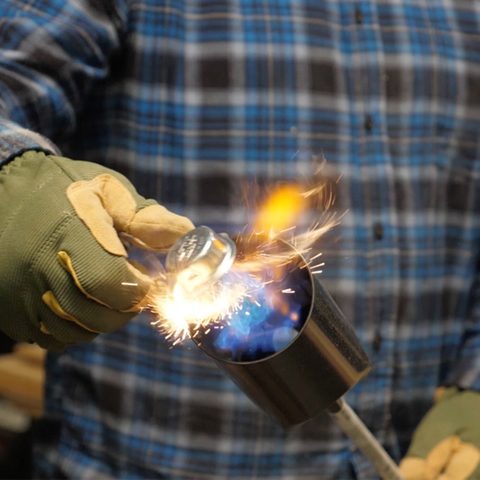Drawing From Ancient Wisdom, The Wood Charring Specialists At Artekura Redefine The Art Of Shou Sugi Ban
The carbonization technique known as Shou Sugi Ban is an ancient Japanese method that has gained prominence in contemporary architecture and woodworking. It involves burning the wood, resulting in a durable and unique carbonized surface. Traditionally done with Japanese cedar, but a variety of other types of wood can also be used. The process involves superficially burning the wood, rapid cooling, removal of the charred layers, and treatment with oil or sealant. Carbonization makes the wood resistant to fire, insects, fungi, and moisture, prolonging its lifespan. The technique combines tradition and modernity, offering a rustic and sophisticated look. Furthermore, it promotes sustainability by harnessing the properties of natural wood and reducing the need for chemical treatments. It is versatile and can be applied in various projects such as cladding and furniture. Its growing popularity is due to its impressive aesthetics and practical, sustainable benefits.

At Artekura, three talented designers stand out for their mastery of the carbonization technique in their works. Fabiano Salbego, Patrick Afornali, and Pedro Leal transform charred wood into furniture and objects. Each brings their own singular vision and individual style, exploring the infinite aesthetic possibilities of this technique. Their designs are true testimonies to the beauty and versatility of carbonized wood, offering viewers a visual and sensory experience. Through their artistry and skill, these designers invite us to dive into a world of creativity.

Interior Design by Fabiano Salbego
Designer Fabiano Salbego uses the carbonization technique for several reasons. One of the main reasons is to raise awareness about deforestation, represented by the cracked carbonized wooden pieces symbolizing the negative impacts of this practice. This aesthetic reminds us of forest fires and aims to create awareness about the importance of forest preservation. Additionally, carbonization helps protect the wood against termites and other harmful insects, prolonging its lifespan. Fabiano values the unique and striking aesthetics of carbonized wood, highlighting its natural textures and patterns. By combining carbonization with stone tops, he creates an impressive visual contrast.

Interior Design by Fabiano Salbego
On the other hand, Patrick Afornali utilizes the carbonization technique to create resistance and texture in his works. By superficially burning the wood, he is able to make it more durable and protected against damage caused by insects and moisture. Moreover, carbonization gives the wood a unique texture, full of grooves and reliefs, adding a tactile and visually interesting element to his creations. The combination of acquired resistance with the striking texture results in pieces that are true sculptural works of art. Patrick's works are a testament to the power of carbonization in transforming wood into something beautiful, durable, and full of personality.

Interior Design by Patrick Afornali

